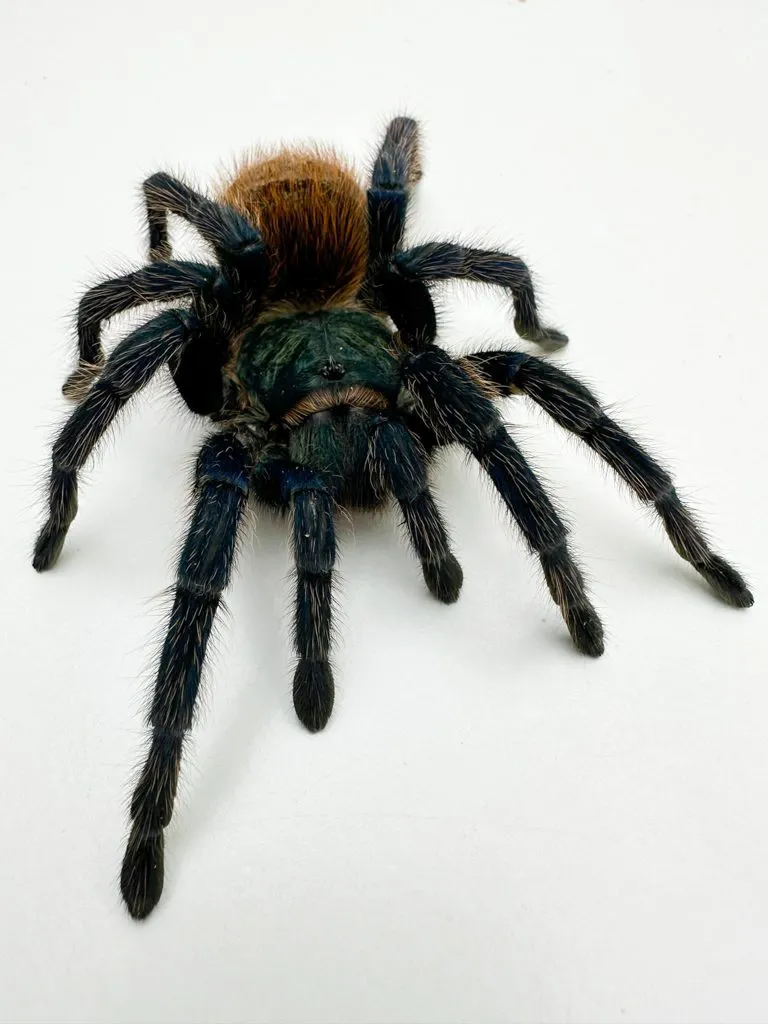Choosing Your Blue Pet Tarantula
Welcoming a blue pet tarantula into your home is an exciting experience. These fascinating creatures, with their vibrant coloration, can become captivating pets. However, responsible ownership starts with making informed choices. Before acquiring a blue tarantula, it’s crucial to understand their specific needs and ensure you can provide a suitable environment. Researching different species and their temperaments is essential, as some are more docile and easier to handle than others. Consider your experience level as a pet owner and the time you can dedicate to their care. Properly selecting a healthy specimen is a critical first step toward a rewarding pet ownership experience. Selecting the right tarantula involves understanding their characteristics, health, and suitability as a pet.
Selecting a Healthy Tarantula
When choosing your blue pet tarantula, inspect it carefully for signs of good health. Look for a tarantula that is alert and responsive to its environment, with all legs intact. Avoid specimens with any missing limbs, as this could indicate a recent injury or a problem with molting. The abdomen should be plump and rounded, not shrunken or wrinkled, suggesting proper hydration and feeding. Check for any signs of mites, parasites, or other abnormalities. Healthy tarantulas typically have a vibrant color, while dull coloration may indicate stress or illness. Observe the tarantula’s movements; it should move with confidence and not appear sluggish or uncoordinated. Ensure the tarantula is active and shows interest in its surroundings. If possible, observe the tarantula eating. A healthy appetite is a good indicator of overall well-being. Ask the seller about the tarantula’s history, including its age, feeding schedule, and any previous health issues.
Identifying Potential Health Issues
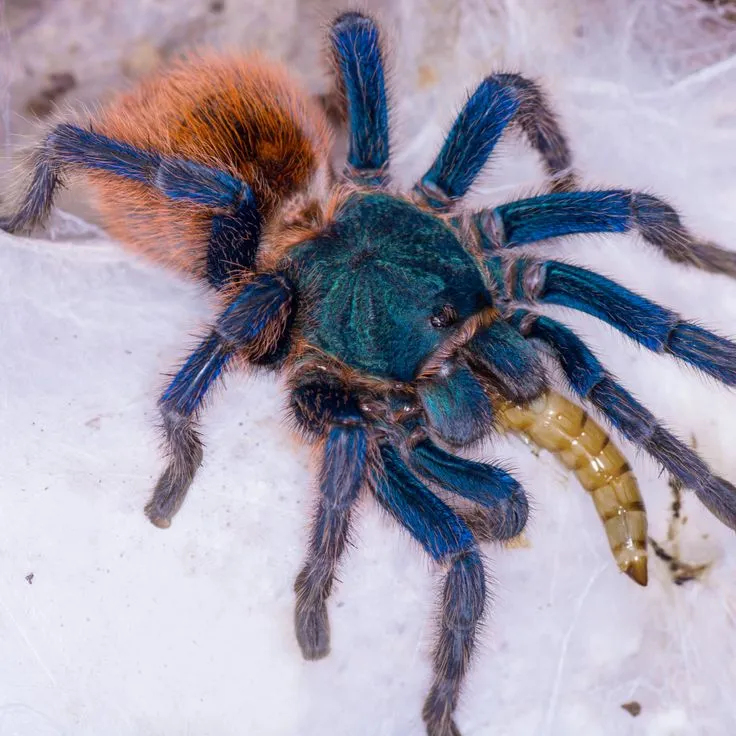
Recognizing potential health issues is vital for providing proper care for your blue pet tarantula. Look for signs of parasites, such as small, moving dots on the tarantula’s body, which could be mites. A swollen abdomen, which could indicate a build-up of fluids, is another concern. Lethargy or a lack of appetite can also indicate that something is wrong. Respiratory issues, such as labored breathing or holding the body in a certain position, are significant health problems. Avoid tarantulas that are excessively thin, as this could be a sign of starvation or illness. Watch for unusual behaviors, such as constant twitching or uncoordinated movements. Any of these signs warrant prompt attention. If you notice any of these symptoms, consult with a veterinarian specializing in exotic animals or an experienced tarantula keeper.
Creating the Ideal Habitat
Creating the ideal habitat is critical for the well-being of your blue pet tarantula, as it allows the tarantula to thrive. The setup of the enclosure greatly affects its health. This involves selecting the right enclosure, substrate, and maintaining the correct temperature and humidity levels. The goal is to replicate the tarantula’s natural environment as closely as possible. This will reduce stress and help the tarantula thrive. The enclosure should be spacious enough for the tarantula to move comfortably and feel safe. Correct temperature and humidity are essential for molting, feeding, and overall health. By providing the appropriate habitat, you create a comfortable environment where the tarantula can live a healthy life.
Enclosure Size and Type
The size and type of enclosure for your blue pet tarantula depend on its species and size. A general guideline is to provide an enclosure that is at least three times the tarantula’s leg span in width. For terrestrial species, the width and length are more important than the height, while arboreal species require more vertical space. Glass or acrylic enclosures are common choices, with secure lids to prevent escapes. Ensure the enclosure is well-ventilated, with holes or mesh tops to allow airflow and prevent a build-up of humidity. The enclosure should be easy to clean and provide good visibility. Consider the specific needs of your tarantula species when choosing an enclosure. Some species require more vertical space, while others may prefer a more secluded environment.
Substrate Selection
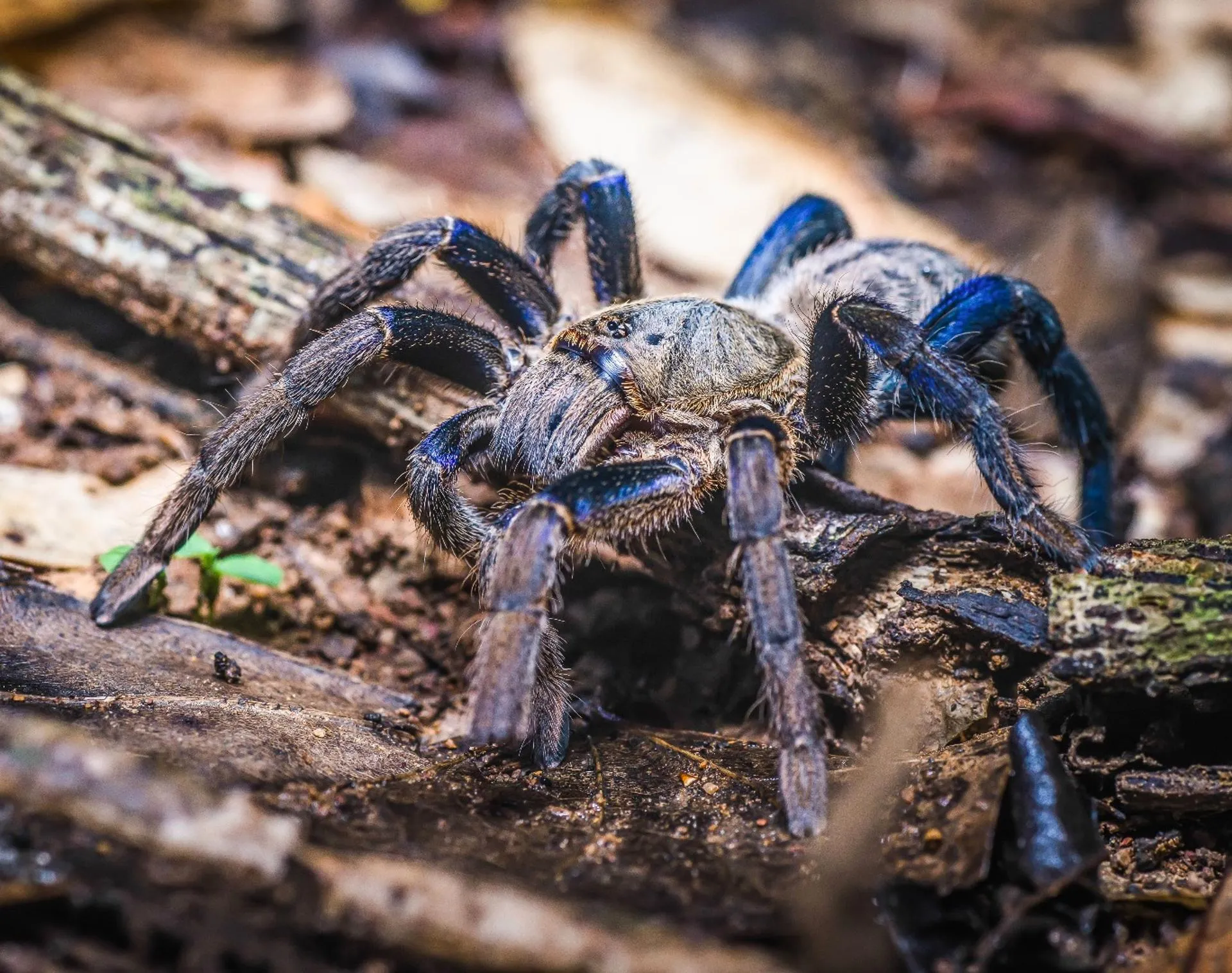
The substrate serves multiple functions, including providing a comfortable environment, helping to regulate humidity, and allowing the tarantula to burrow. Common substrate choices include coconut fiber, peat moss, and a mixture of both. Coconut fiber is a popular choice because it retains moisture well, resists mold, and is readily available. Peat moss is another excellent option; however, it may need more frequent misting to maintain humidity levels. Avoid substrates that can be toxic or cause injury. The substrate should be deep enough for the tarantula to burrow. The depth will vary depending on the species. Mix the substrate regularly to prevent the growth of mold and bacteria. Keep the substrate clean by removing any uneaten food and waste. Replace the substrate entirely every few months, or more frequently if needed.
Temperature and Humidity Control
Maintaining the correct temperature and humidity levels is crucial for the health and well-being of your blue pet tarantula. Most tarantulas thrive in temperatures between 75°F and 85°F (24°C and 29°C). Use a thermometer to monitor the temperature inside the enclosure. If necessary, use a heat source, such as a heat mat or ceramic heat emitter, to maintain the correct temperature. Humidity levels also play a vital role. Humidity requirements vary by species, but generally, a humidity level between 60% and 80% is appropriate for most species. Use a hygrometer to monitor the humidity levels within the enclosure. You can increase humidity by misting the enclosure with water, particularly in areas with ventilation. Ensure that the enclosure does not become overly humid, as this can lead to mold and respiratory issues. Maintaining the correct temperature and humidity levels is critical for molting, feeding, and overall health.
Proper Feeding and Hydration
Proper feeding and hydration are essential aspects of caring for your blue pet tarantula, ensuring it remains healthy and active. Providing the right food and water is the key to keeping your tarantula happy and healthy. This involves understanding feeding frequency, prey selection, and watering techniques. The tarantula’s diet must be appropriate for the species and its life stage. Providing fresh water and proper hydration are important. By carefully planning their diet and providing fresh water, you contribute to their overall health and well-being. Consistent feeding and hydration will help them maintain their energy levels and live a long and healthy life.
Feeding Frequency and Prey Selection
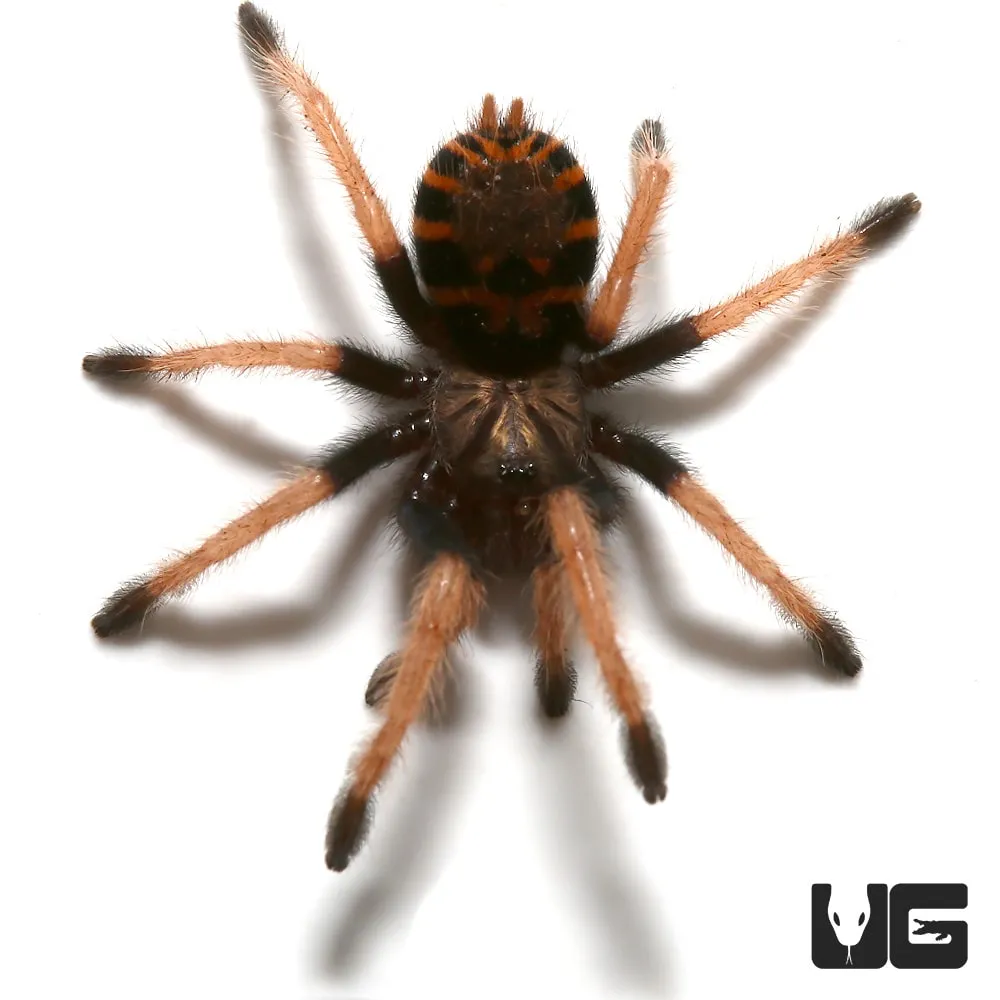
The feeding frequency for your blue pet tarantula depends on its age, species, and metabolism. Juvenile tarantulas typically need to be fed more frequently than adults. Younger tarantulas may be fed every other day, while adults can be fed once or twice a week. The best prey for tarantulas is live insects. Crickets, mealworms, and roaches are standard choices, with the size of the prey depending on the size of the tarantula. Avoid feeding prey that is too large, as it can stress your tarantula. It is also wise to remove uneaten prey within 24 hours to prevent the tarantula from being injured by them. Always dust the prey insects with a calcium and vitamin supplement to ensure that your tarantula gets all the nutrients. The diet is essential for ensuring your tarantula is healthy and active.
Watering Techniques
Providing fresh water is essential for your blue pet tarantula, and they require constant access to water. The easiest way to do this is to provide a shallow water dish. The dish should be shallow enough to prevent the tarantula from drowning. Use a small water dish, and make sure that it is always full. It’s important to change the water frequently to keep it fresh. Some keepers also lightly mist the enclosure to allow the tarantula to drink water droplets. Ensure the water is clean and free of any chemicals. The watering technique ensures that the tarantula stays hydrated, especially during molting. By following these watering techniques, you can ensure that your tarantula is properly hydrated.
Handling and Safety Precautions
Handling a blue pet tarantula requires caution and respect for their needs. These fascinating creatures can be delicate. Therefore, it is essential to know the best practices. Proper handling is important to prevent injury to yourself and the tarantula. Understanding their behavior and potential risks helps ensure a safe and enjoyable experience. By following safety guidelines and knowing how to handle your tarantula correctly, you can minimize the risk of any unwanted incidents. Safety and proper handling are essential aspects of caring for a tarantula.
Safe Handling Practices
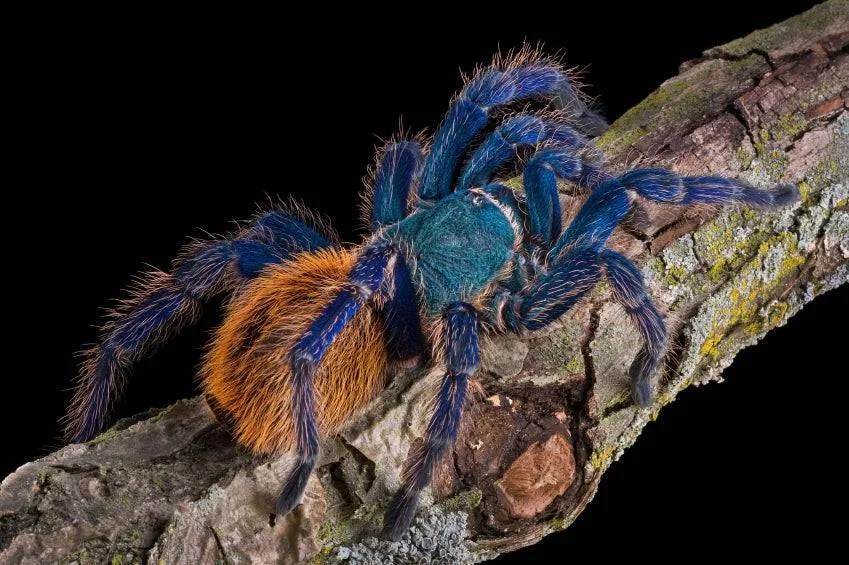
When handling your blue pet tarantula, it’s important to approach it with care and patience. The best practice is to avoid handling your tarantula unless necessary. If you decide to handle it, it should be done on a soft surface, such as a bed or couch, to reduce the risk of injury if the tarantula falls. Always wash your hands before handling your tarantula, as this removes any potential irritants and reduces the chances of transferring bacteria. Use a gentle approach, and avoid quick movements that could startle the tarantula. The tarantula may be nervous, and it may not want to be handled. If the tarantula seems reluctant or agitated, it is best to leave it alone. If your tarantula suddenly moves quickly, gently put it back in its enclosure. Remember, the safety of both you and the tarantula should always be your top priority.
Recognizing Stress Signals
Recognizing stress signals is important for the well-being of your blue pet tarantula. Knowing the signs helps you provide the right care. Common signs of stress include defensive postures, such as raising their front legs or displaying their fangs. Fast movements, such as fleeing or rapid movements, may be an indication of stress. Loss of appetite can also indicate stress. If you notice any of these behaviors, you can identify the cause of the stress and try to address it. For example, if the tarantula seems stressed, try to leave it alone, reduce noise and vibrations around its enclosure, or adjust the temperature or humidity if necessary. By understanding the signs of stress and taking appropriate action, you can ensure that your tarantula feels safe and comfortable.
Regular Maintenance and Cleaning
Regular maintenance and cleaning are essential for keeping your blue pet tarantula healthy. Routine cleaning is necessary to prevent the growth of bacteria, mold, and other harmful substances. Maintaining a clean environment reduces the risk of diseases, improves the tarantula’s well-being, and makes it thrive. A clean and well-maintained enclosure provides a better quality of life. This part of care involves cleaning the enclosure, conducting routine health checks, and making adjustments as needed. Regular maintenance and cleaning contribute to the long-term health and happiness of your pet. Taking the right steps can help you create a comfortable and thriving environment for your blue pet tarantula.
Cleaning the Enclosure
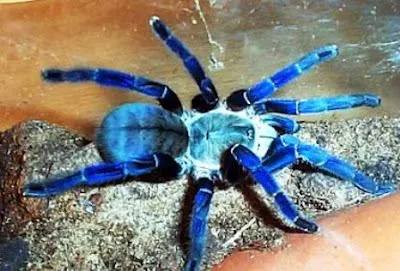
Cleaning the enclosure of your blue pet tarantula is essential to maintain a healthy environment. Spot clean the enclosure regularly, removing any uneaten food, waste, or shed exoskeletons. This will prevent the growth of mold and bacteria, helping you keep your tarantula safe. Fully clean the enclosure every few months. Before beginning, transfer the tarantula to a safe container, making sure the container is well-ventilated and escape-proof. Remove the substrate and dispose of it properly. Wash the enclosure with warm water and a mild soap, rinsing thoroughly to remove all traces of soap. Allow the enclosure to dry completely before adding new substrate and returning the tarantula to its habitat. Always wear gloves during cleaning to protect yourself from potential irritants or allergens.
Routine Health Checks
Routine health checks are essential for catching health problems early, and these should be part of your regular tarantula care routine. Observe your blue pet tarantula regularly. Look for any changes in behavior, appetite, or appearance. Pay attention to any missing limbs, unusual coloration, or any other signs of illness. Check the tarantula’s abdomen for signs of swelling or dehydration. Note the tarantula’s molting cycle, and monitor the tarantula during and after molting for any issues. If you notice any signs of illness or distress, consult with a veterinarian specializing in exotic animals or an experienced tarantula keeper. Regular health checks are an essential part of responsible pet ownership.
Understanding Molting
Understanding molting is a key aspect of caring for your blue pet tarantula. Molting is a natural process in which the tarantula sheds its exoskeleton to grow. During this process, the tarantula becomes vulnerable. Understanding this process is essential. This involves knowing what to expect and what to do to help the tarantula. Molting is a critical phase in a tarantula’s life. Knowing what to expect and how to care for your tarantula during molting will help ensure their survival.
What to Expect During Molting
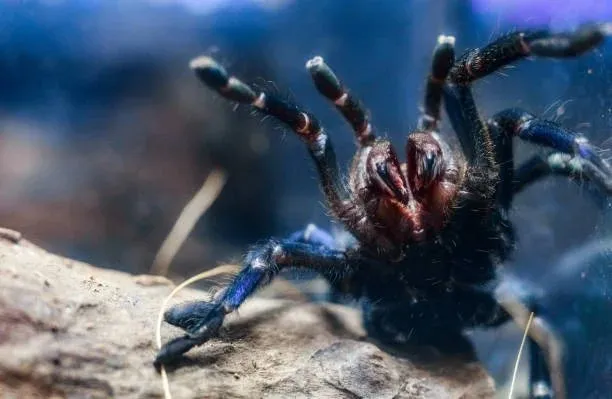
During the molting process, your blue pet tarantula may exhibit changes in behavior and appearance. Before molting, the tarantula may stop eating and become less active. Its abdomen may appear dark or swollen. The tarantula may also create a silk mat or web in preparation for molting. The molting process itself can take several hours or even days, and the tarantula will lie on its back, or side, while it sheds its old exoskeleton. During this time, it will be vulnerable. Avoid disturbing the tarantula during molting. Do not feed it during or shortly after molting, as its fangs and exoskeleton will be soft. Provide a clean, undisturbed environment for the tarantula. Once the tarantula has completed molting, it will appear brighter, and its new exoskeleton will be soft. Allow a few days for the new exoskeleton to harden before offering food.
Caring for a blue pet tarantula can be a rewarding experience, and it is very interesting to learn about these creatures. By following the care tips, you can help ensure that your pet tarantula has a healthy, long, and fulfilling life. Remember to always prioritize your tarantula’s well-being by providing the right environment and care, and you will enjoy the beauty and fascinating behavior of this remarkable pet.
